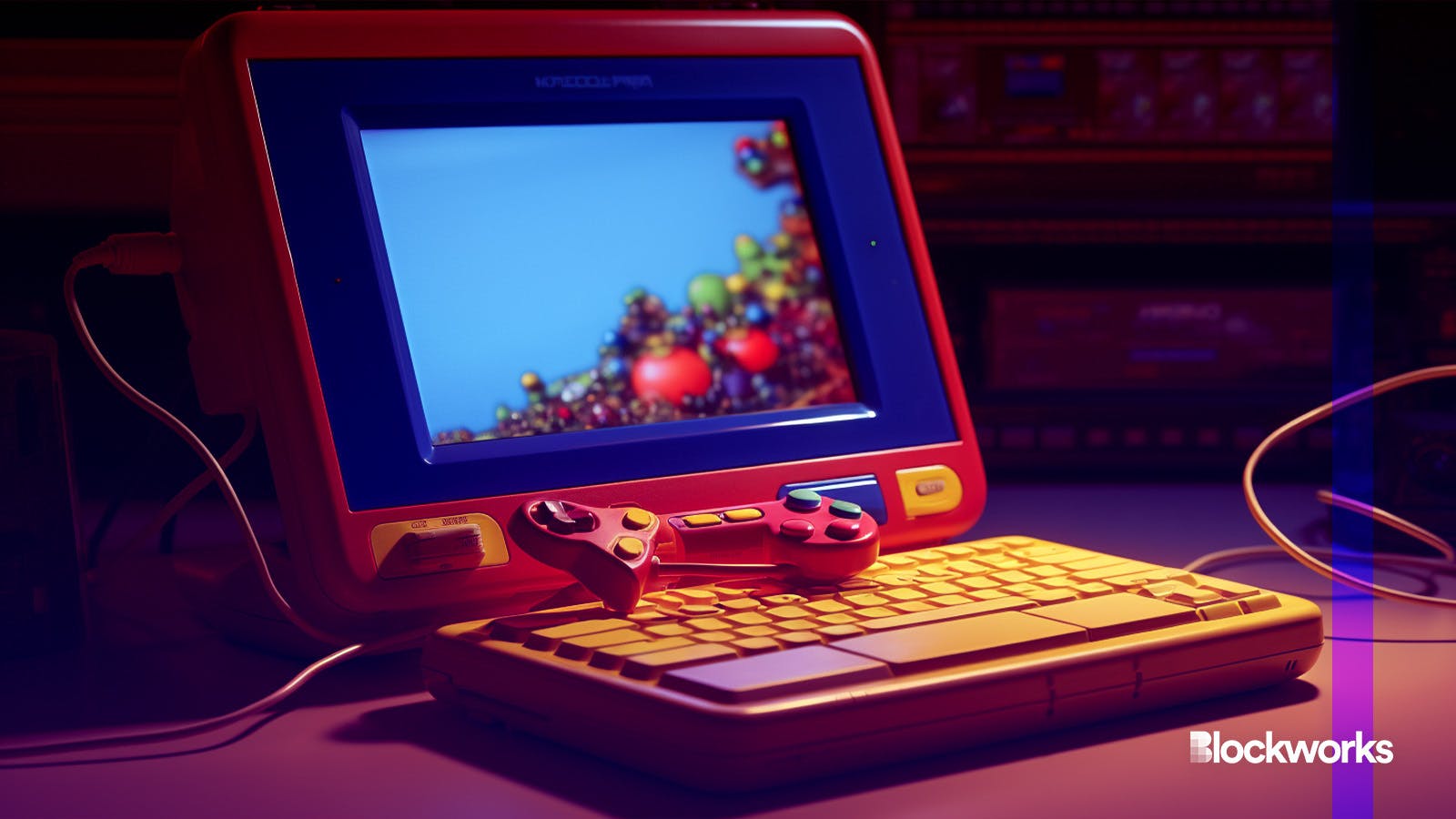Forget NFTs. Let’s go back to basics and make Web3 games fun first.
Without a fun game to play, adding in NFTs and Web3 to gameplay just doesn’t make sense

Midjourney modified by Blockworks
Have we forgotten about fun?
GameFi is witnessing a pivotal migration right now from play-to-earn to play-to-own models. And amid the yearning for possession of these NFTs (perhaps in spite of it) many Web3 gaming developers have inadvertently strayed from the essence that animates gaming — characters, narratives, gameplay experiences and community.
They crack their heads figuring out ways to incentivize NFT ownership, overcomplicating the process and losing sight of the fundamental elements that breathe life into gaming.
The prevalent misconception that NFTs are singularly the epitome of Web3 gaming’s value system needs dismantling.
Players are not concerned about the mechanics of NFT ownership or ownership itself, but about whether the game offers an enjoyable experience. The heart of a game isn’t encapsulated in the tokenization of in-game assets — it’s in the intricately designed worlds, the compelling storylines and the immersive strategic gameplay that captivates and challenges the players’ imagination.
The intersection of ownership and fun gameplay truly defines Web3 gaming, far beyond token possession.
Creating genuine value
As Web3 gaming developers, we must acknowledge that the creation of in-game assets of genuine value demands more than just a technical tokenization process; it needs artistic labor. It calls for dedication from diverse and talented teams, and more importantly, community involvement in crafting worlds, characters and narratives that resonate profoundly with players.
NFTs that are born from these intricacies go beyond ownership and hold value as they become vessels embodying collective efforts and emotional connections, encapsulating a slice of every player’s unique journey.
NFT ownership within GameFi isn’t a solidarity pursuit; it thrives within a symbiotic relationship embedded within a comprehensive ecosystem that flourishes through community-driven financial, creative and social contributions.
Read more from our opinion section: Hey gamers, blockchain isn’t that bad
It’s easy for us to overlook the significance of a tightly interwoven and inclusive gaming ecosystem in nurturing NFT ownership. We often fail to realize that players’ experiences across various spaces and platforms are an integral part of a fun gaming experience. They are crucial in extending the influence of token possession beyond the game interface and provide players with the robust support and diverse interactions necessary to cultivate and maintain their incentive and interest in owning NFTs.
To successfully foster a sustainable gaming ecosystem, we must be able to balance fun, accessibility and ownership. Achieving this balance through enhanced tokenomics, community participation and effective governing mechanisms forms the bedrock for long-term viability in Web3 gaming. While significant, NFT ownership or play-to-own models alone cannot guarantee success for a game without an ecosystem that prioritizes an enjoyable gaming experience.
2023 marked a transformative phase in GameFi: The blockchain gaming industry saw modest growth from 43% in Q4 2022 to 46% in Q1 2023, with around 44% active wallets.
The influx of talent from traditional gaming studios and the continual innovation in projects signal a continual promising trajectory for GameFi. As it continues its evolutionary journey, we need to recognize that NFTs aren’t the destination — they are the milestones marking the evolution of gaming, the keepsakes of players’ experiences and the testament of a community’s collective journey within GameFi.
NFT ownership in Web3 gaming is overrated unless it is intrinsically linked to fun.
Get the news in your inbox. Explore Blockworks newsletters:
- The Breakdown: Decoding crypto and the markets. Daily.
- 0xResearch: Alpha in your inbox. Think like an analyst.






